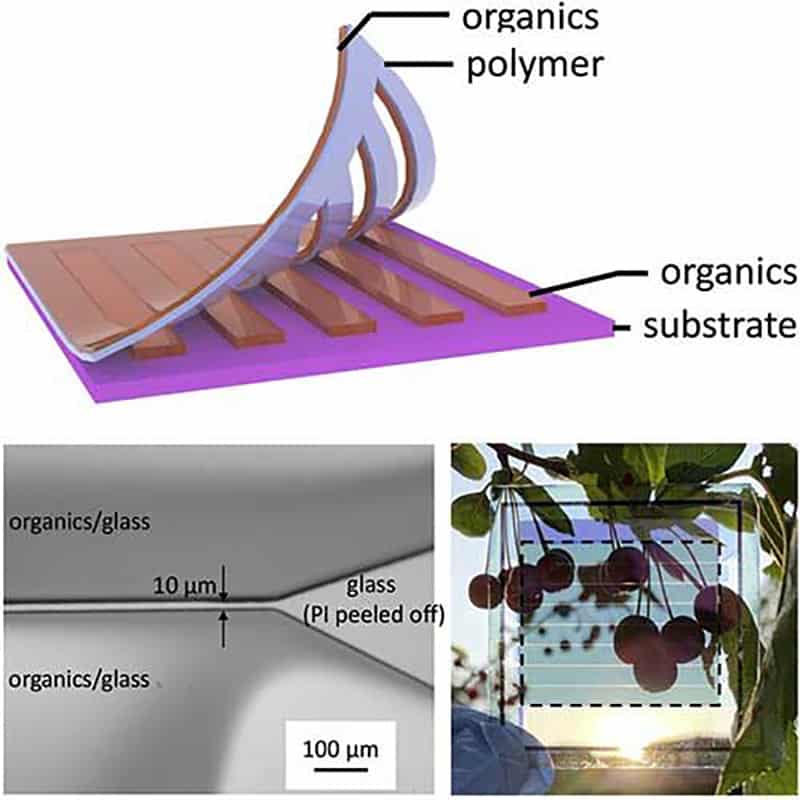Traditional silicon-based solar cells are completely opaque, which works for solar farms and roofs but would defeat the purpose of windows. A transparent solar cell would change the rules of the game.
Now, in an effort to bring transparent solar cells to home windows, researchers at the University of Michigan have developed a technique to manufacture their highly efficient and semitransparent solar cells at scale.
Organic solar cells, in which the light absorber is a kind of plastic, can be transparent. But these cells have lagged behind their silicon-based cousins for energy-producing purposes due to engineering challenges such as low efficiency and short lifespans, but recent work out of Forrest’s lab has achieved record efficiencies of 10% and estimated lifetimes of up to 30 years.
A significant challenge in manufacturing transparent solar cells is creating the micron-scale electrical connections between individual cells that comprise the solar module. Conventional methods that use lasers to pattern the cells can easily damage the organic light absorbers.
Instead, researchers developed a multistep peel-off patterning method that achieved micron-scale resolution. They deposited thin films and patterned them into extremely thin strips, and set down the organic and metal layers. The team then peeled off the strips, creating very fine electrical interconnections between the cells.

The team connected eight semitransparent solar cells, each 4 cm x 0.4 cm and separated by 200µm-wide interconnections, to create a single 13-square-centimeter module. The power conversion efficiency of 7.3% was approximately 10% less than for the individual solar cells in the module. This small efficiency loss does not increase with the size of the module; hence, similar efficiencies are expected for meter-scale panels as well.
With the transparency nearing 50% and a greenish tint, the cells are suitable for use in commercial windows. Higher transparencies that are likely preferred for the residential market are easily achieved by this same technology.
“It is now time to get industry involved to turn this technology into affordable applications,” said Xinjing Huang, U-M doctoral student in applied physics and the first author of the published research.
Eventually, the flexible solar cell panel will be sandwiched between two window panels. The goal for these energy-generating window films is to be about 50% transparent with 10%-15% efficiency. The technique can also be generalized to other organic electronic devices. Researchers are already applying it to OLEDs for white lighting.
Researchers develop highly efficient and semitransparent solar cells
Source: Tambay News

0 Comments